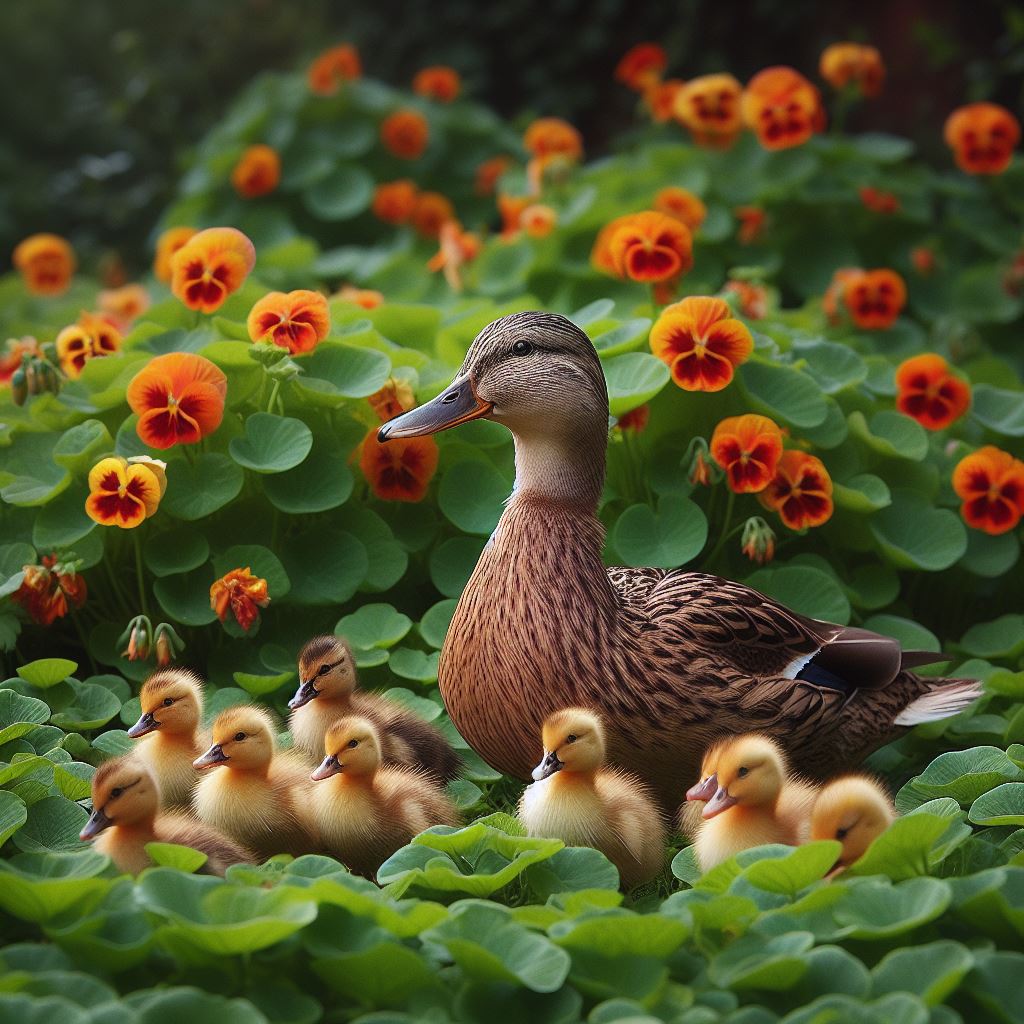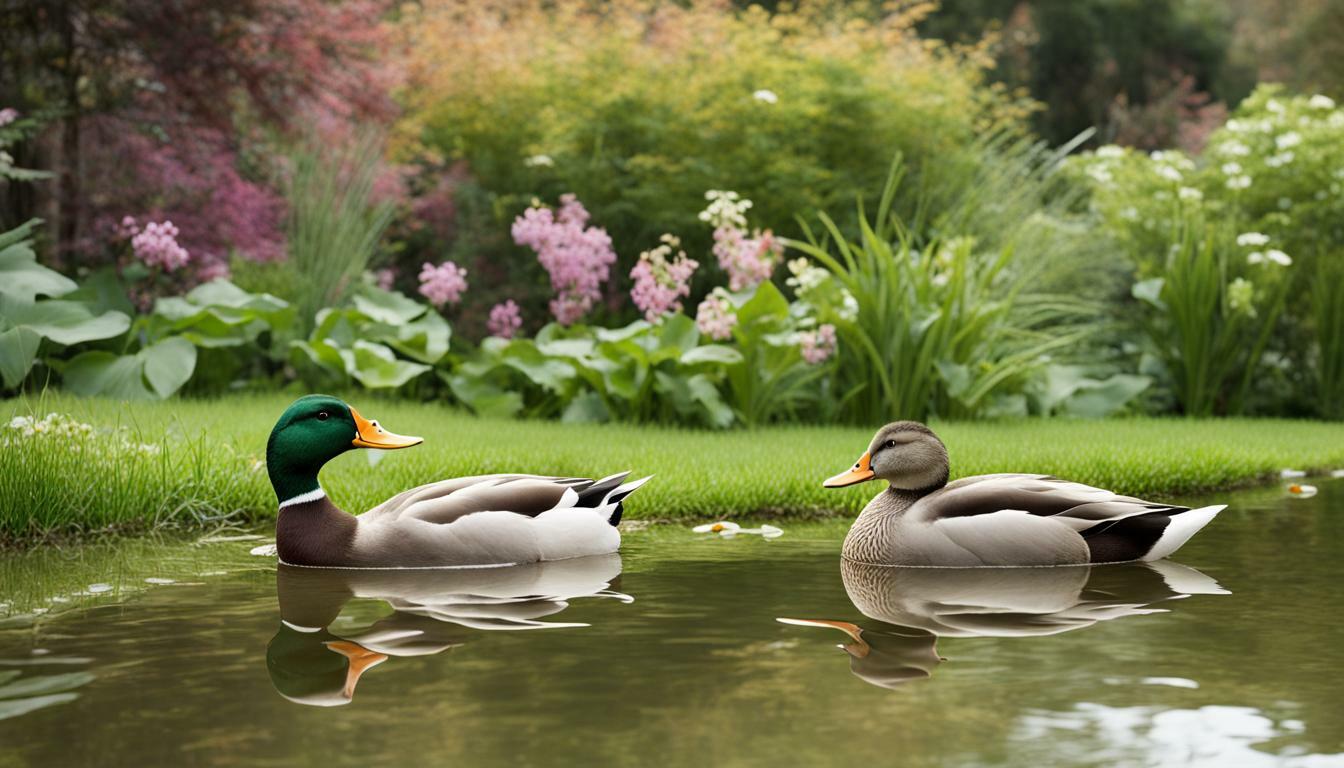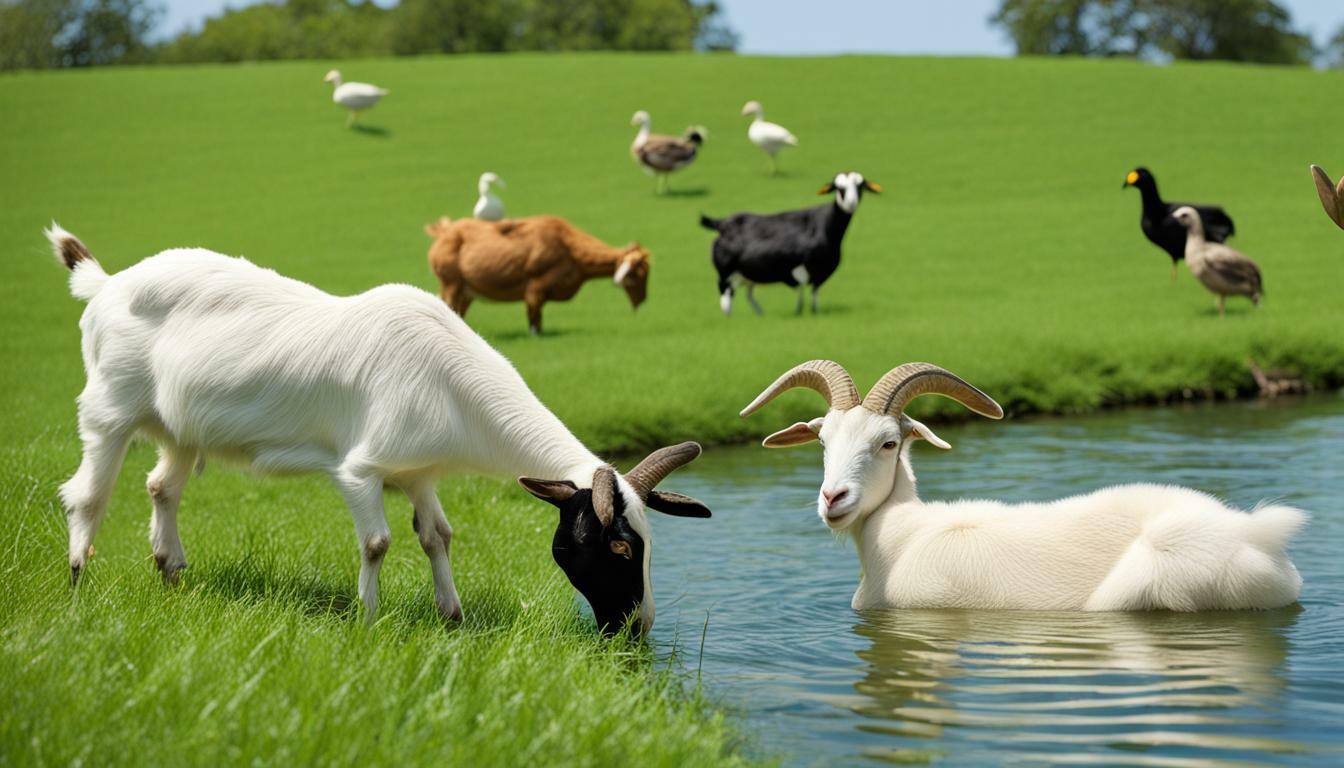Can Ducks Find Their Way Home? A Homeward Journey Guide

Table of content:
- How Do Ducks Know How to Return to Their Original Nesting Site?
- What Cues Help Ducks Navigate Back to Their Home Territory After Migration?
- Can Ducks Remember the Way Back to Where They Were Born and Raised?
- How Do Ducklings Learn Where Their Home Territory Is?
- Do Ducks Have Good Homing Instincts Compared to Other Birds?
- Why Are Some Duck Species Better at Homing Than Others?
- How Far Away Can You Move a Duck From Its Home Before It Gets Lost?
- Final Thoughts
Many duck species, including mallards, wood ducks, and pintails, exhibit strong homing behaviors. But how do ducks consistently find their way back home, even after traveling hundreds or thousands of miles away?
Researchers have uncovered several navigation strategies ducks use to pinpoint their home sites with precision. Their skills have evolved over time to take advantage of the earth’s magnetic fields, landmarks, stars, scents, and more.
Understanding how ducks locate and relocate back to their home wetlands provides fascinating insights into waterfowl behavior, biology, and cognitive abilities. Examining the cues ducks use to navigate sheds light on their impressive sensory capabilities and advanced mental maps.
How Do Ducks Know How to Return to Their Original Nesting Site?
One of the most intriguing questions about duck homing behavior is how they manage to return to the exact same nesting site year after year. Scientists have proposed several explanations for this phenomenon.
Hereditary Homing Instinct
One theory is ducks possess an inherited or instinctual sense of which direction to travel each season to reach their home wetlands. According to research, some waterfowl species demonstrate remarkably accurate navigation back to natal sites without prior experience or learning. Their homing ability appears innately programmed.
However, the reliability of naïve migration orientation varies across duck species. Certain types, like eiders, show stronger innate navigation skills compared to pintails, which indicates both genetic and learned factors are at play.
geomagnetic imprinting
Many ornithologists believe ducks rely heavily on geomagnetic imprinting to identify their way back to ancestral breeding areas. As ducklings, they record the unique magnetic signature of their home wetlands.
When they migrate south for winter, this magnetic map remains imprinted in their memories. Ducks then use it as a compass reference to fly back along the same path. Studies show birds can detect incredibly subtle changes in magnetic fields, enabling them to pinpoint locations.
Geomagnetic imprinting likely works in tandem with visible landmarks, scents, star patterns, and other cues to guide navigation. But research confirms magnetic senses are crucial for waterfowl homing capabilities.
Recognizing Scents
Scent also assists ducks with homing to natal sites. Ducks have an extremely acute sense of smell that can detect odors up to a mile away. Their extensive olfactory bulbs and neurons process scents integral to finding food, avoiding predators, and recognizing places.
When returning north, ducks rely partially on remembering the characteristic smells of their home wetlands. Each habitat has a distinctive scent profile that ducks can recall and follow. This olfactory map helps lead them back to the right sites after migration.
Site Familiarity
Prior experience and familiarity with their home territory also enables accurate homing. Older ducks that have made the roundtrip migration before can better navigate back due to familiarity with the landscape and sights.
Even without inherent instincts, ducks develop mental maps of their home range by imprinting on visual cues. With each subsequent journey, they become more adept at using these memories and environmental clues to locate their nesting sites.
What Cues Help Ducks Navigate Back to Their Home Territory After Migration?
Ducks employ a toolkit of different senses, strategies, and cues when migrating hundreds or thousands of miles back to home territories. Research has uncovered several key mechanisms ducks use to find their way with pinpoint accuracy.
Celestial Navigation by the Stars
Studies show ducks partly navigate by the stars, an ability called celestial navigation. On clear nights, they can see patterns of stars and constellations that provide a directional guide. Ducks even compensate for stars’ movement by remembering their orientation at different times.
Star patterns form a consistent map ducks can follow seasonally between their breeding and wintering grounds. This celestial map helps them stay on course and recognize their location during migration.
Detecting Earth’s Magnetic Field
As mentioned earlier, scientists believe geomagnetic sensitivity offers an internal compass ducks employ to identify their latitude and longitude. By recognizing the magnetic signature stored in their memories, ducks can reliably determine their position relative to home.
Researchers have discovered magnetite deposits in birds’ beaks and brains that enable them to detect even slight magnetic shifts. Ducks likely incorporate geomagnetic navigation with other orientation cues for optimum accuracy.
Recognizing Landmarks
Visual landmarks also assist migrating ducks with pinpointing their bearings. Landmarks like rivers, coastlines, mountain ranges, forests, and wetlands offer familiar reference points. Ducks instinctively know to adjust their headings when crossing major landscape features.
Studies of homing pigeons show they memorize distinct topographical details and build complex visual maps. Ducks probably form similar mental atlases of sights that continuously guide them in the right direction during migration.
Following Established Flyways
Most ducks follow ancestral routes known as flyways during seasonal migration. They tend to travel along the same pathways between nesting and wintering grounds year after year. This route fidelity enables ducks to recall landmarks and navpoints they’ve flown before.
Flyways developed through natural selection, as juvenile ducks imprinted on the migration paths of adults. Generations of ducks now instinctively know to follow preset courses that maximize habitat availability and energetic efficiency.
Can Ducks Remember the Way Back to Where They Were Born and Raised?
Yes, ducks possess excellent cognitive maps and spatial memory enabling them to find their way back to natal breeding grounds. Their advanced mental capabilities facilitate navigation over thousands of miles with little deviation.
Even after spending up to 8 months in distant wintering habitats, most ducks can locate the precise wetlands where they were reared as ducklings. Their brains encode the sights, smells, and other sensory details that pinpoint home.
Several key factors allow ducks to remember and relocate their birthplaces:
Mental Maps
Ducks form complex mental maps of their surroundings early in life through imprinting. As ducklings, they meticulously learn landmarks, scents, magnetic fields, and celestial cues that characterize their home range. This neurological mapping allows accurate repeat navigation.
Spatial Memory
Ducks have exceptional spatial memories for retaining sensory details and locations. Well-developed hippocampuses allow them to memorize visual scenes and physical arrangements crucial for reorientation. Ducks combine mental maps with spatial memory to navigate back to natal areas.
Route Retracing
Since most ducks follow ancestral flyways between seasonal grounds, retracing learned routes also aids their homing abilities. By sticking to familiar migration pathways, ducks can rely on memory rather than navigational cues to locate their destination.
Prior Experience
Previous successful journeys help ducks remember navigation details for subsequent trips. Elderly ducks’ extensive experience moving between breeding and wintering areas makes pinpointing natal sites easier. Their well-honed mental atlases guide them back precisely.
How Do Ducklings Learn Where Their Home Territory Is?
Ducklings begin imprinting on their home range almost immediately after hatching. This rapid sensory learning equips them with lifelong navigational tools for homing. Ducklings employ the following strategies:
Imprinting on Visual Landmarks
Within their first week, ducklings start memorizing the unique features of their surroundings. They imprint on the vegetation, land formations, water edges, and other landmarks that characterize their home wetlands. These sights become ingrained navigational aids.
Scent Imprinting
A duckling’s sensitive sense of smell also kicks in quickly to detect and remember subtle environmental odors. Each wetland has a distinctive scent profile from vegetation, prey, water chemistry, and minerals. Ducklings imprint on this “olfactory map” to help locate places.
Imprinting on the Stars
By roughly two weeks old, ducklings imprint on celestial cues by observing the night sky. They start encoding the star patterns, moon phases, and other heavenly bodies offering directional guidance.
Sensing Magnetic Fields
Geomagnetic imprinting also begins shortly after hatching as ducklings record the magnetic signature of their natal region. This equips them with an internal compass reference guiding lifelong navigation.
Following Parents
Sticking close to mother hens and fathers provides essential learning opportunities. Ducklings memorize migration routes and habitats by traveling with parents between nesting and wintering grounds. This imprints flyways.
By imprinting on multiple environmental factors early on, ducklings gain the sensory toolkit to establish their home territory for life. Their abilities are fine-tuned through yearly migrations.
Do Ducks Have Good Homing Instincts Compared to Other Birds?
Ducks demonstrate some of the strongest homing and navigation abilities in the avian world. A few reasons they excel include:
Specialized Neuroanatomy
Parts of a duck’s brain are enlarged and specialized to facilitate highly accurate spatial memory and sensory mapping. Their hippocampus, olfactory bulbs, and magnetic-sensing tissues are well developed for navigation.
Generational Knowledge
Ducks rely heavily on imprinting and instinct rather than learning through experience. Their innate capabilities evolved from eons of waterfowl ancestors passing down genetic homing advantages.
Migration Pressures
The risks of migration selected for exceptionally good navigation skills over time. Ducks with the best homing abilities survived and reproduced. Poor navigators were wiped out through natural selection.
Adaptability
Ducks combine multiple orientation cues seamlessly, from geomagnetic sensing to star-gazing. This behavioral plasticity enables effective navigation from diverse strategies.
Overall, ducks likely surpass most bird species besides hummingbirds, pigeons, and seabirds regarding impressive homing talents. But more comparative research is needed to quantify their abilities against other avian groups.
Why Are Some Duck Species Better at Homing Than Others?
Interestingly, not all ducks possess identical talent in navigating back to home sites after migration. Certain duck species consistently demonstrate superior homing compared to their relatives. Why does this variation exist?
Migration Distance
Ducks that migrate longer distances, like Northern pintails, tend to have better inherent navigation skills. The further they travel, the stronger their genetic and behavioral homing adaptations. Shorter-distance migrants rely more on learning.
Breeding Site Fidelity
Duck species that demonstrate high faithfulness to ancestral breeding grounds and mates, such as eiders, excel in homing. Their instincts steer them back precisely compared to less site-loyal ducks.
Habitat Specialization
Ducks with specialized habitat preferences, like wood ducks in wetland forests, show excellent navigation to locate rare, suitable nesting sites. Generalist ducks are less precise in their homing abilities.
Winter Distribution
Ducks that concentrate in a few select wintering areas, like redheads, have stronger path integration for targeting these destinations. Species dispersing widely tend to be poorer navigators.
Age and Experience
Older ducks of most species refine their homing skills over time as they become more familiar with flyways. Younger ducks migrating for the first time rely more on genetic orientation.
How Far Away Can You Move a Duck From Its Home Before It Gets Lost?
Ducks can be displaced impressively far from their home territory and still navigate back successfully. But there are limitations based on distance and direction.
Number of Miles
Experiments have transported ducks hundreds of miles away by plane in random directions and over 90% found their way home, even when taken 1,000 miles. But beyond this, orientation deteriorates. One duck returned from 3,000 miles away.
Cardinal Direction
North-south displacements are tolerated much further than east-west. Ducks use geomagnetic imprinting as a north-south compass reference. Without clear latitudinal cues, east-west movement of over 200 miles causes disorientation.
Barriers
Major geographical barriers like mountain ranges interfere with navigation, especially for juveniles lacking experience. Unfamiliar topography can offset their mental maps.
Species Variation
Some duck species tolerate displacement better based on innate talents, short vs. long distance migration, and habitat preferences. For example, pintails excel when transported long distances compared to mallards.
Overall, ducks have incredible navigation capacity to compensate for transportation far from their home territory. But extremely long distances or certain barriers decrease their odds of rediscovering their wetland origins.
Final Thoughts
Ducks possess impressive sensory tools and advanced mental mapping that enables them to return to home habitats seasonally. By imprinting on magnetic fields, landmarks, scents, celestial objects, and inherited routes, ducks can cover thousands of miles yet reach ancestral nesting sites with precision. Their navigational systems are still not fully understood but continue intriguing researchers.
Examining waterfowl homing behaviors provides insights into how birds evolved superior spatial memories, orientation capabilities, and cognitive mapping of their surroundings. Ducks offer an unparalleled model for studying the neuroscience and genetics of avian navigation.
As human development encroaches on natural wetlands, the pressures ducks face during biannual migrations are mounting. Their legendary homing abilities will be tested by habitat loss along flyways and wintering grounds. Conservation measures are crucial for sustaining ducks’ unique navigation systems into the future.
Welcome. I’m Adreena Shanum, the proud owner of this website, and I am incredibly passionate about animals, especially poultry. I founded adreenapets.com as a labor of love, stemming from my desire to share my knowledge and experiences with poultry enthusiasts worldwide.




